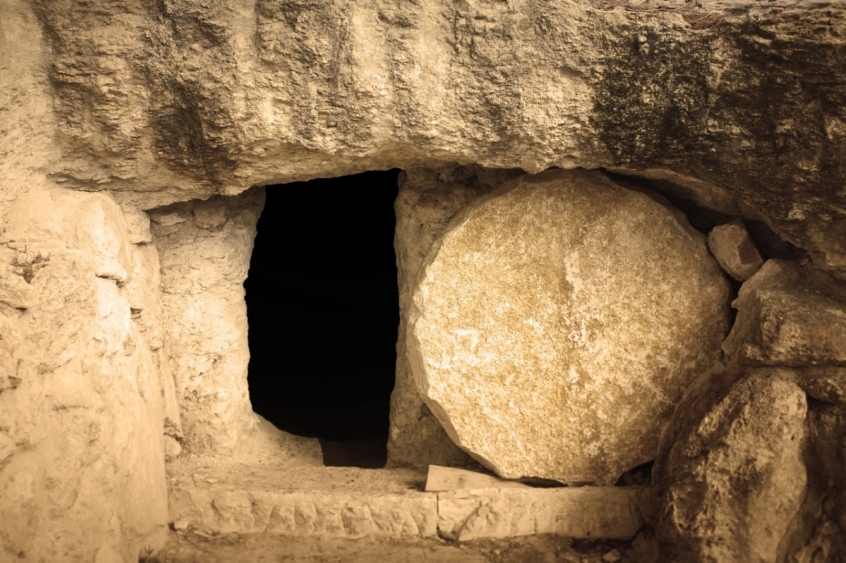
Earlier this month The Times reported on a scholarly article which sheds new light - but also new darkness - on one of the most enigmatic ancient inscriptions ever discovered: the marble Nazareth Inscription.
This inscription can be found in the French National Library in Paris on a stone measuring some 60 by 38 centimetres.
The script dates from the first century before or after Christ, and was found among the possessions of one Wilhelm Froehner, who died in 1925. A short note said that the inscription had been sent [to him?] from Nazareth in 1878. That's all.
Who discovered the inscription? Why was it sent to Froehner? And was it discovered in Nazareth or merely sent from there? After all, at that time, Nazareth was a market for ancient objects.
The text itself is just as fascinating. It's an edict of an unnamed Roman emperor that nobody is allowed to open tombs, let alone carry the corpses away - on pain of death. (The robbing of tombs was common practice, but the penalty is unusually severe.)
New research
The new research shows that the marble used for the inscription did not originate in Israel or even the Middle East, but on the Greek island of Kos. The scholars involved work at Oklahoma University and Harvard University. However, these scientists also claim that this information resolves the debate about the significance of the inscription, which was often regarded as a Roman response to early Christian reports about Jesus' empty tomb.
Instead, they propose that the edict was issued by the emperor Augustus in response to the desecration of the grave of a famous tyrant of Kos. This part of their conclusion is not so certain. After all, science cannot say much about history. The suggestion that it is unlikely that the quarry on Kos exported its stone is pretty flimsy.
Jesus's tomb?
Ever since the inscription was first published, Christians have speculated that the anonymous emperor was targeting Christians who spoke about the empty tomb of Jesus. No doubt this speculation was fuelled by the fact that the text was found in Nazareth, although that is not where the resurrection took place.
The fact that the desecration of tombs suddenly becomes a capital crime is remarkable, though. The scholar who first published the text thought the edict was indeed the response of Tiberius (see Luke 3:1-2) to the beginnings of Christianity. Putting up an inscription was the normal procedure of government publications in those days.
The famous biblical scholar F.F. Bruce thought that the edict had rather been issued by emperor Claudius (see Acts 18:1-2). Claudius was the first emperor who had much to do with the Christian movement and he would have been told about the Christian belief in an empty tomb. Still others suggested the notorious Nero as the source, because the Greek of the text is so tainted with Latin. If that were the case, Nero would be threatening any Christians who proclaimed that there had been an empty tomb. These interpretations are in line with Matthew 28:15, which states that there were lasting rumours in Israel about the tomb of Jesus.
Or not?
The latest research may have established that the marble used for the inscription stems from Kos, but that does not decide where the text was written or what it was about. In my view the scientists' claim that the text was written on Kos goes beyond the evidence. On the other hand, there is nothing in the text that specifically mentions Jesus or the earliest Christians.
Interpretations connecting the two are also speculative, although not impossible. One thing is certain: we can't use this enigmatic edict as 'evidence' for the resurrection. Having said that, some connection cannot be ruled out either, whatever The Times may say.
The Times quotes Diarmaid MacCulloch, professor of the history of Christianity at Oxford University, as stating that any connection between the inscription and Jesus is 'muddle-headed and silly' anyway, adding that 'there is no early Christian artefact from the 1st century AD which has any plausibility at all.' The early followers of Jesus were, he says, 'obscure people' who 'wouldn't leave that sort of thing behind.'
The professor makes at least three mistakes. Firstly, the object was in any case not made by Christians, but by the Romans. Secondly, we know that the early Christians were literate and civilised. Thirdly, the argument is circular in its absoluteness.
The enigmatic plate in Paris could still be the oldest physical artifact connected to Christianity. It just could.
Rev Dr Pieter Lalleman is a tutor in Biblical Studies at Spurgeon's College.













